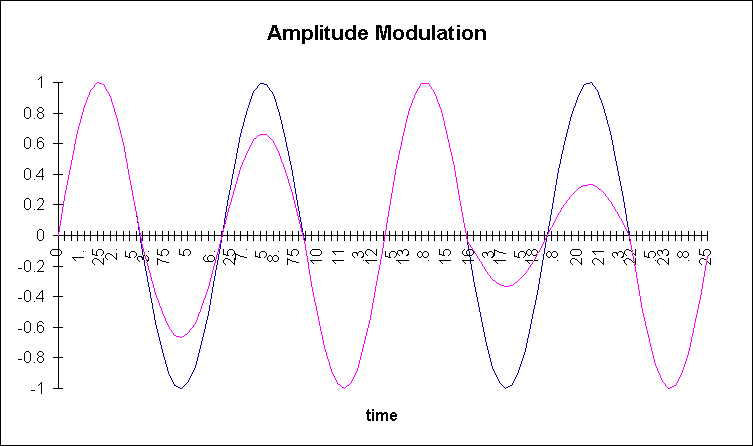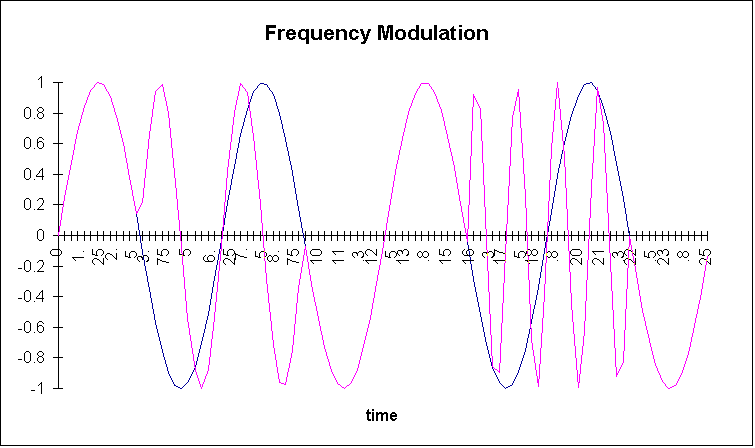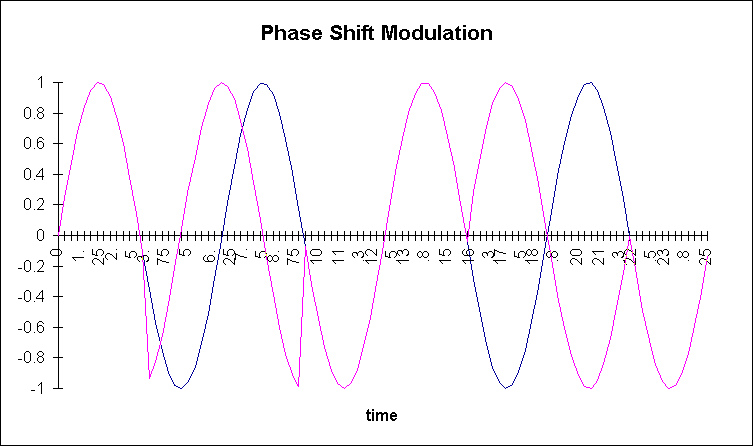
Sine waves propagate better than square waves. A square wave can be considered the infinite sum of a sin * cos product. The square wave is built from many harmonics. Each product in the square wave sum represents another harmonic at an integer multiple of the original frequency. In a bandwidth limited channel (such as a phone line), the higher frequencies or harmonics cannot be transmitted. Therefore the wave is distorted. In the diagram below, the red wave represents the value transmitted for the corresponding square wave when only 4 harmonics are sent. Many more harmonics or frequencies must be sent to make the transmitted wave actually look square.

It becomes difficult to send square waves through a bandwidth limited channel, such as a phone line, because the higher frequencies are filtered out. Without the higher frequencies, the wave no longer looks like a square wave. This makes it difficult for the receiver to determine the actual bit value. To avoid this problem, the data is send only as sine waves. The data is transmitted by modulating the sine wave with a modulator-demodulator (modem).
Different modulation techniques include:
Amplitude— the amplitude of the sine wave is changed.

Frequency— the frequency of the sine wave is changed.

Phase shift — the phase of the sine wave is changed.

Combinations of AM and PSM are used in Quadrature Amplitude Modulation.
Dialup modems can also perform phone functions such as dial, answer and hang-up.
Modems over the public phones use two carrier frequencies (full duplex) in the audio range.
When modems connect, they must negotiate:
- quality of the line
- speed
- options such as encoding and compression.
- disable echo suppression
This negotiation takes about 10 seconds for a V.34 modem and is usually heard as a series of squeals from your modem.
Multiple signals can be sent over a single line by using multiplexing. You can get a hundred channels of TV out of one cable due to multiplexing.
- Frequency Division Multiplexing (FDM) — different channels use different carrier frequencies.
- Wavelength Division Multiplexing (WDM) — different wavelengths (colors) of light are used.
- Time Division Multiplexing (TDM) — round robin use of single frequency.